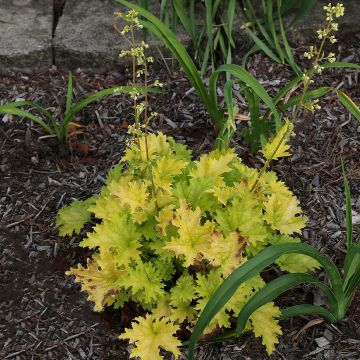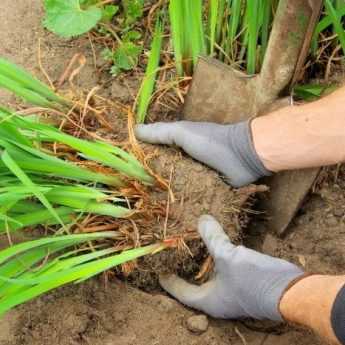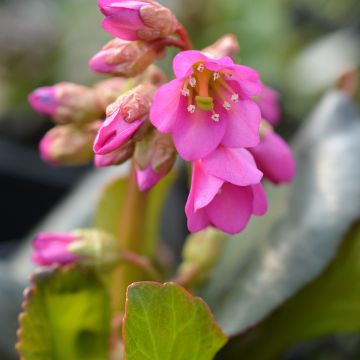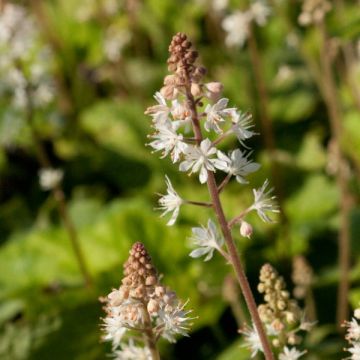

Heuchère Coral Cloud


Heuchère Coral Cloud
Heuchera sanguinea Coral Cloud
Heuchera sanguinea Coral Cloud
Coral Bells, Alumroot
Why not try an alternative variety in stock?
View all →This plant carries a 12 months recovery warranty
More information
We guarantee the quality of our plants for a full growing cycle, and will replace at our expense any plant that fails to recover under normal climatic and planting conditions.
From €7.90 for pickup delivery and €6.90 for home delivery
Express home delivery from €8.90.
Does this plant fit my garden?
Set up your Plantfit profile →
Description
The Heuchera sanguinea 'Coral Cloud', also known as bloodred heuchera, is a magnificent variety, vigorous and particularly floriferous in summer. On the ground, it forms a tuft of rounded and scalloped leaves that are more or less evergreen in winter, marbled with light tones on a dark green background. From this cushion emerge in summer numerous floral stems adorned with tiny bells ranging from reddish-pink to pale coral pink. This perennial is used for border planting and in flower beds, in full sun or partial shade, in a moist, well-drained, humus-rich soil.
The bloodred heuchera 'Coral Cloud' belongs to the saxifrage family. The Heuchera sanguinea, from which it originates, is a botanical species found in nature from Arizona to New Mexico, where it grows in canyons. It has passed on to its descendants, through mutations and hybrids, an abundant red to pink flowering. 'Coral Cloud' has a low, spreading habit. The plant reaches 60-70 cm (24-28in) in height when in flower, 30 cm (12in) for the foliage, and about 40 cm (16in) in diameter. The flowering, which is nectariferous, takes place in June-July, more or less early depending on the climate. Numerous slender and upright stems emerge from the foliage, bearing panicles made up of numerous tubular flowers that are initially coral red, fading over time. The rounded leaves, weakly lobed and toothed on the edges, are often evergreen in winter and covered in glandular hairs. They measure an average of 4 cm (2in) in length. Their colour is a dark green marbled with pale silver green and whitish green. It is a perennial plant with a rhizomatous root system, with shallow roots.
Plant this 'Coral Cloud' Heuchera at the base of light pink or white flowering roses to highlight its light and colorful flowering. It can also be used as a ground cover to fill the base of spring-flowering shrubs and it will thrive in a slightly moist rockery. In a border, this perennial brings dynamism to the garden. Pair it with hostas, carex and ferns for a wild effect. In a rockery, place a contrasting mulch at its base to enhance its elegant foliage. Heuchera is an ideal plant for filling pots, containers, and flower boxes. Good for cutting, the delicate bells of this plant bring lightness to bouquets.
The heucheras with trembling stems and tiny bells were very fashionable in the 19th century in all European gardens. They were named "Painter's Despair" by the impressionist painters, probably because of their light flowering, difficult to capture in an image, swaying at the slightest breeze.
Heuchera sanguinea Coral Cloud in pictures




Flowering
Foliage
Plant habit
Botanical data
Heuchera
sanguinea
Coral Cloud
Saxifragaceae
Coral Bells, Alumroot
North America
Other Heuchera
View all →Planting and care
Bloody Heucheras like a moist to wet soil, rich in humus, but well-drained. They are planted in non-burning sun, partial shade or even dappled shade, depending on the varieties. They don't appreciate limestone, dry and poor soils, although they tolerate occasional summer drought. Mulch in summer to reduce watering. They are very hardy plants. Clumps of heucheras tend to lift and emerge from the ground over time. Every 4 to 5 years, at the end of summer or beginning of autumn, divide the clumps and replant the divisions with the collar positioned just at ground level.
Planting period
Intended location
Care
Planting & care advice
This item has not been reviewed yet - be the first to leave a review about it.
Ground cover perennials
Haven't found what you were looking for?
Hardiness is the lowest winter temperature a plant can endure without suffering serious damage or even dying. However, hardiness is affected by location (a sheltered area, such as a patio), protection (winter cover) and soil type (hardiness is improved by well-drained soil).

Photo Sharing Terms & Conditions
In order to encourage gardeners to interact and share their experiences, Promesse de fleurs offers various media enabling content to be uploaded onto its Site - in particular via the ‘Photo sharing’ module.
The User agrees to refrain from:
- Posting any content that is illegal, prejudicial, insulting, racist, inciteful to hatred, revisionist, contrary to public decency, that infringes on privacy or on the privacy rights of third parties, in particular the publicity rights of persons and goods, intellectual property rights, or the right to privacy.
- Submitting content on behalf of a third party;
- Impersonate the identity of a third party and/or publish any personal information about a third party;
In general, the User undertakes to refrain from any unethical behaviour.
All Content (in particular text, comments, files, images, photos, videos, creative works, etc.), which may be subject to property or intellectual property rights, image or other private rights, shall remain the property of the User, subject to the limited rights granted by the terms of the licence granted by Promesse de fleurs as stated below. Users are at liberty to publish or not to publish such Content on the Site, notably via the ‘Photo Sharing’ facility, and accept that this Content shall be made public and freely accessible, notably on the Internet.
Users further acknowledge, undertake to have ,and guarantee that they hold all necessary rights and permissions to publish such material on the Site, in particular with regard to the legislation in force pertaining to any privacy, property, intellectual property, image, or contractual rights, or rights of any other nature. By publishing such Content on the Site, Users acknowledge accepting full liability as publishers of the Content within the meaning of the law, and grant Promesse de fleurs, free of charge, an inclusive, worldwide licence for the said Content for the entire duration of its publication, including all reproduction, representation, up/downloading, displaying, performing, transmission, and storage rights.
Users also grant permission for their name to be linked to the Content and accept that this link may not always be made available.
By engaging in posting material, Users consent to their Content becoming automatically accessible on the Internet, in particular on other sites and/or blogs and/or web pages of the Promesse de fleurs site, including in particular social pages and the Promesse de fleurs catalogue.
Users may secure the removal of entrusted content free of charge by issuing a simple request via our contact form.



































































